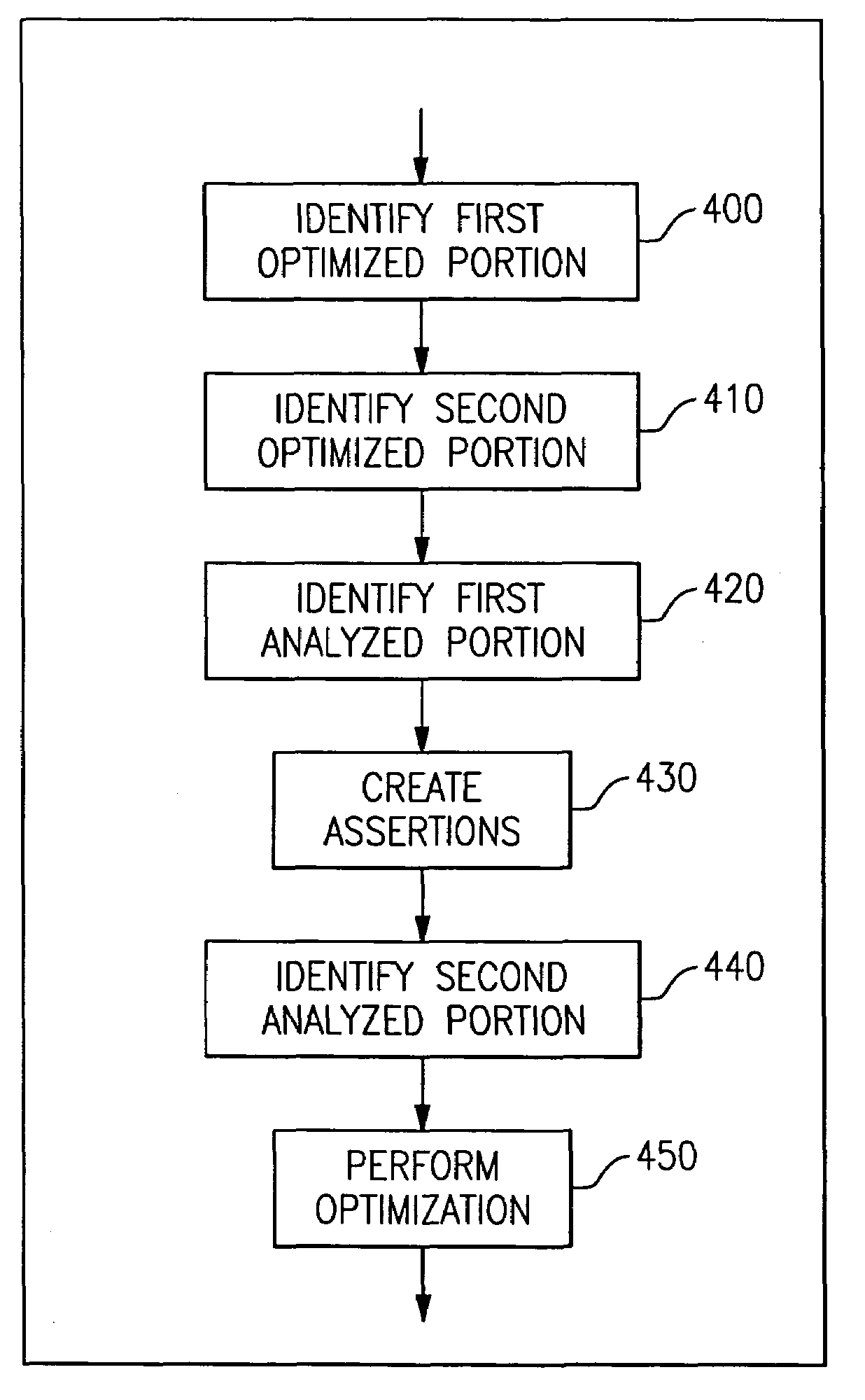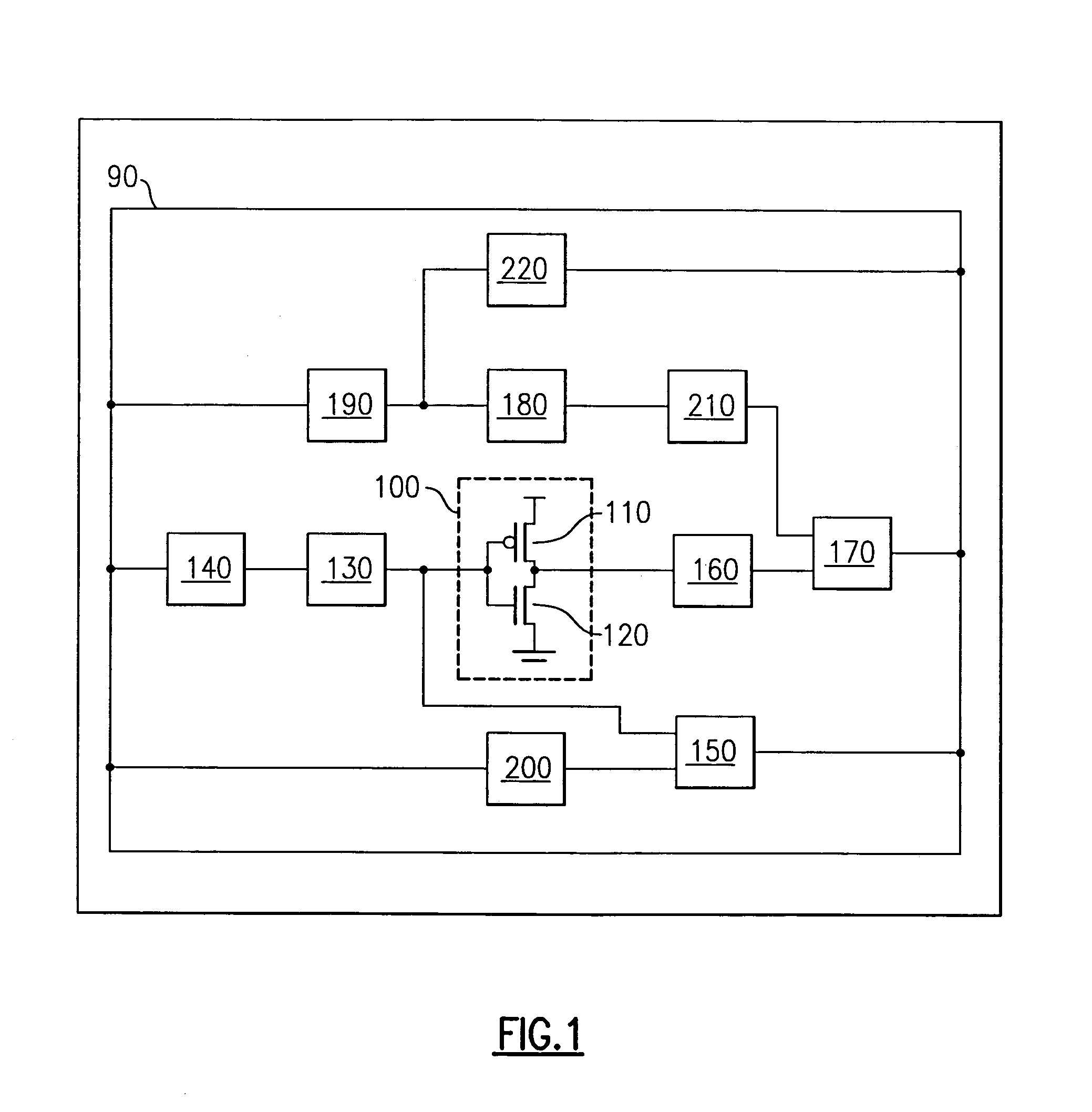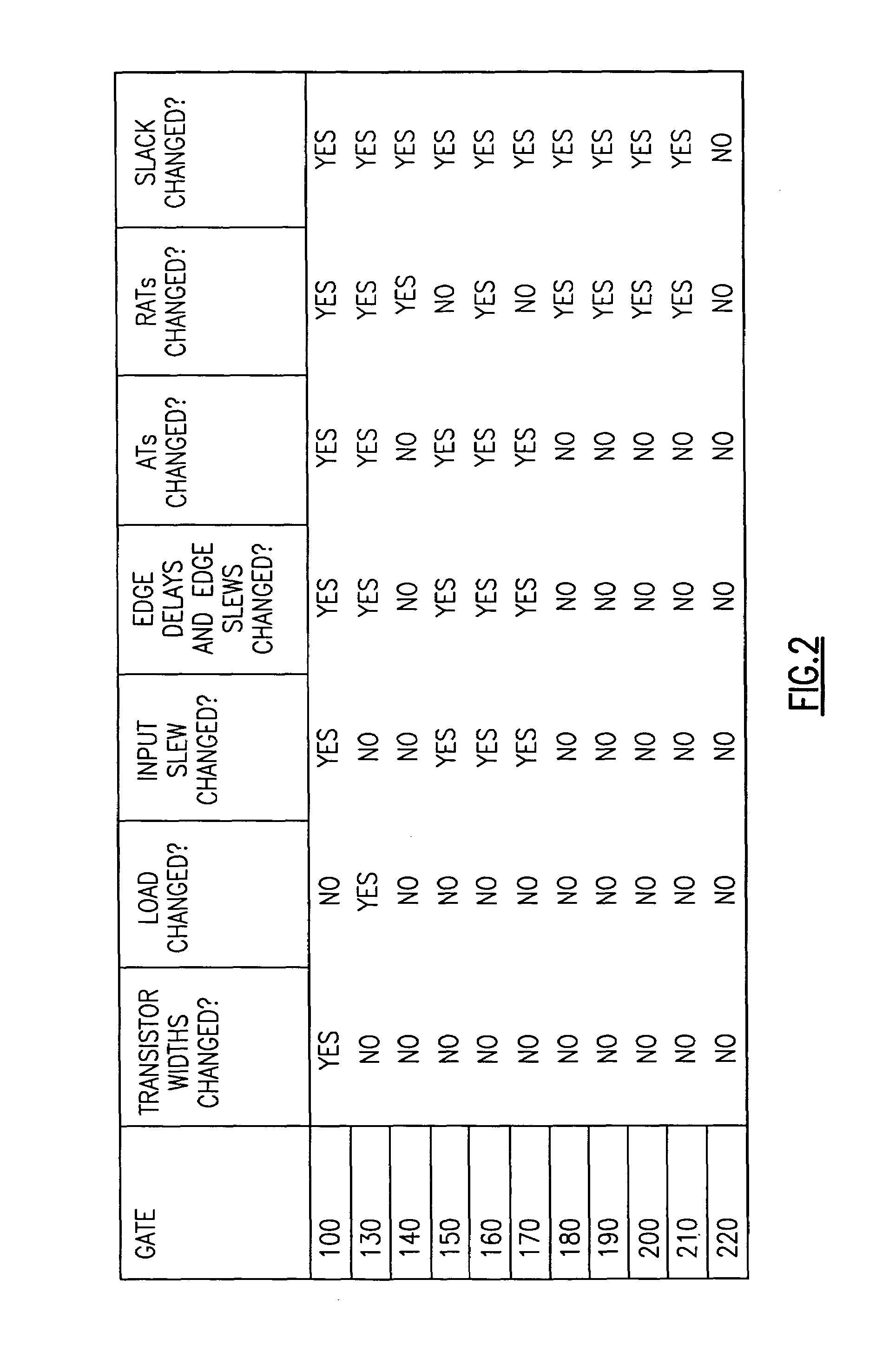Method of optimizing and analyzing selected portions of a digital integrated circuit
- Summary
- Abstract
- Description
- Claims
- Application Information
AI Technical Summary
Benefits of technology
Problems solved by technology
Method used
Image
Examples
Embodiment Construction
[0025]The inventive method applies to the design of a digital integrated circuit or system which is to be optimized to operate at a specified clock period, to reduce the minimum clock period at which the circuit or system can operate, and optionally to reduce the portion of the circuit or system (e.g., the number of gates) which are in paths which limit the clock period at which the circuit or system will operate. It may equally apply to the design of a partition of a circuit or system.
[0026]The general goal of circuit or system optimization is to minimize some objective function subject to a set of constraints. The objective may include the clock period at which the circuit or system can operate, circuit or system area or power, or some combination of these and / or other objectives. Optimization constraints can include the clock period at which the circuit or system can operate, circuit or system area or power, slews, beta ratios of gates (the ratio between the “strength,” or effect...
PUM
 Login to View More
Login to View More Abstract
Description
Claims
Application Information
 Login to View More
Login to View More - R&D
- Intellectual Property
- Life Sciences
- Materials
- Tech Scout
- Unparalleled Data Quality
- Higher Quality Content
- 60% Fewer Hallucinations
Browse by: Latest US Patents, China's latest patents, Technical Efficacy Thesaurus, Application Domain, Technology Topic, Popular Technical Reports.
© 2025 PatSnap. All rights reserved.Legal|Privacy policy|Modern Slavery Act Transparency Statement|Sitemap|About US| Contact US: help@patsnap.com



